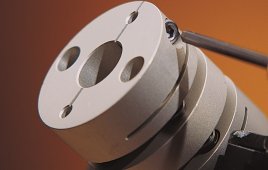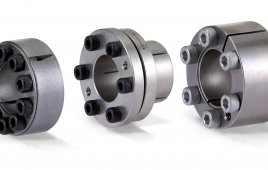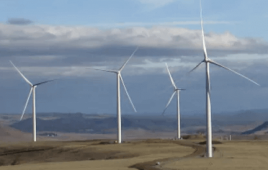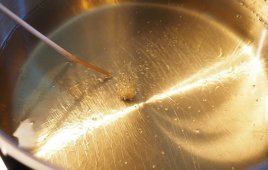Mechanical couplings connect shafts so one can transmit rotational power to the other. Shafts are never perfectly aligned so the coupling tolerates slight misalignments, but only to a degree.
There are three types of misalignment. The center lines of the shafts might be parallel but offset, the centerlines might form an angle, or the distance between the shaft-end faces may vary when running, and possibly a combination of these. The coupling is supposed to tolerate the misalignment. If a rigid mechanical coupling were used, damaging loads can transfer from one shaft to the other and prematurely wear bearings and equipment on both sides.
In wind turbines, couplings are used on the highspeed (output) shaft of the gearbox to drive the generator. Flexible shaft couplings accommodate that slight misalignment between the two. The task is made more difficult because the coupling is working in a nacelle where everything (gearbox and generator mostly) moves around a bit, even though it is bolted to a large steel bed plate. Several coupling designs have found favor.
One steel-shaft coupling rated for up to 9,200 ftlb is said to be free from wear and maintenance, work quietly, provide electrical insulation, and is torsionally soft and flexible in all directions. Another design uses two sets of links, one on each end of a tube to form a double cardanic system. The links connect through rubber bushings. Its manufacturer says the coupling can be sized for any torque, needs no maintenance, it’s electrically insulated, damps noise and vibration, and is flexible in axial, angular, and radial directions. More recent designs use a fiberglass composite membrane and fiberglass tube. Membranes at each end of the tube provide sufficient axial and angular flexibility. It’s rated for torques up to 14,750 ft-lb.
Another composite-disc coupling is said to exceed the typical operation life of a normal driveline couplings. The unit is said to have features such as:
• A lower life cycle cost
• Composite material designed and tested to withstand a wide range of environmental conditions
• Handle loads beyond the application needs
• Lightweight design for easy installation. It drops in between the existing flange, says the manufacturer.
• Suitable for use in turbines operating in areas with difficult power grid conditions. (A starting generator often produces torque spikes)
Filed Under: Couplings





